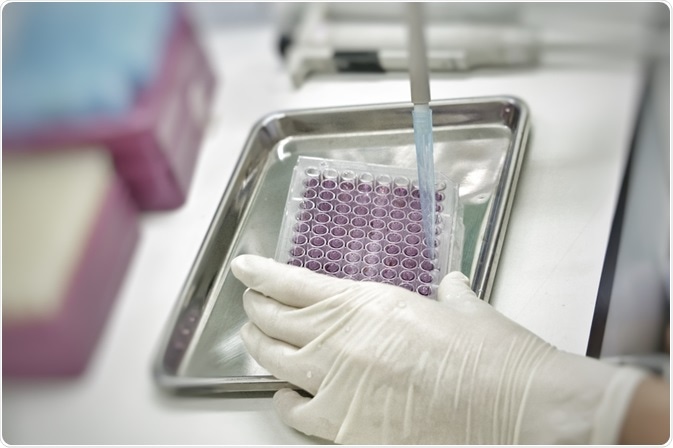Measuring the potentially adverse effects of a substance upon an organism is vital for medical science and several industries. One property of a substance that must be known is its cytotoxic effect. This article will discuss this topic.
The Difference Between Cytotoxicity and Toxicity.
Many substances have a toxic effect. Some are more toxic than others, and it is vital that scientists and medical professionals know the effects and how severely they can affect an organism. Toxicity is defined as the quality a substance (for example, a drug) has of being toxic or poisonous. Toxicity is dependent on dosage.
Whilst toxicity is a more general term for how harmful a substance is to an organism; cytotoxicity is the term for how toxic a substance is to cells. A cytotoxic compound can cause cell damage or death, either through necrosis or apoptosis. Some substances are more cytotoxic than others and researchers aim to measure a chemical’s cytotoxicity levels to ensure that it is not harmful and/or fatal to patients. Examples of cytotoxic agents include chemotherapy drugs and certain venoms.

Cell Cytotoxicity Testing. Image Credit: ArtPanupat/Shutterstock.com
Measuring Cytotoxicity
Whilst cytotoxicity can be measured in several ways, the most common methods are measuring ATP content, using protease markers, or using vital dyes such as formazan dyes. Most cytotoxic assays work on the premise that a dying cell has a compromised cellular membrane, leading to cellular components leaking into the surrounding medium. Compromised cellular membranes also allow the penetration of dyes into the cell itself. These phenomena can then be measured and analyzed by researchers.
Cytotoxic activity can be underestimated, however. This is because membrane integrity loss occurs later in the cytotoxic process. To avoid this, alternative non-radioactive bioassays have been recently developed. These measure cytotoxicity in both proliferating and non-proliferating cell population samples. Measuring compounds that leak out of compromised cells that have become leaky allows detection of those cells amongst healthy, viable ones.
There are two classes of molecules that can be used in a cytotoxicity bioassay. The first class are the vital dyes such as trypan blue or fluorescent DNA binding dyes – these cannot normally enter viable cells, but they can pass through compromised cell membranes. The second class are cellular markers which leak out of a compromised cell. These can either be artificially introduced or can be naturally existing molecules such as enzymes.
It is vital to know how many cells are alive or dead both during and after the experiment. In addition, measuring the number of accumulated dead cells throughout the experiment is also useful, as well as distinguishing between cytotoxicity and growth arrest. Estimating the number of dead cells that have accumulated can be more sensitive than measuring the decrease in a marker.
Cytotoxicity and Chemotherapy
One field that cytotoxicity measurement plays a part in is cancer research and chemotherapy drugs. It is vital to know both the cytotoxic effects of a drug on a cancerous cell and any unintended effects upon healthy, normal cells. For example, some drugs used in chemotherapy are teratogenic, causing functional and physical defects in fetuses or embryos.
Chemotherapy can be given with the intent to cure or prolong life and can also be used to palliate symptoms. Chemotherapy is increasingly being used in conjunction with radiotherapy and surgery. This can be either to reduce the size of the tumor or as adjuvant treatment. All cytotoxic drugs have side effects, and a balance must be struck between toxicity and benefit to the patient.
Combinations of drugs are used in some cancer treatments. These cocktails are typically more cytotoxic than single drugs but have the advantage of better treatment of the tumors and an increase in survivability for the patient. For some tumors, however, treatment with single drugs remains the best option.
There are different classes of cytotoxic drugs. Each has characteristic anti-tumor activity, toxicity, and sites of action. One key factor to consider before selecting a certain drug is the sites of metabolism and excretion as this may lead to enhanced toxicity due to impaired drug handling. Dosing is also important to avoid any adverse side effects that may occur.
Cytotoxicity and Nanoparticles
Nanotechnology is an exciting and recently developed field. Whilst the number of nanoparticles and nanomaterials and their applications has grown exponentially over the past few decades, research into their long-term effects upon the human body is relatively thin on the ground. This includes their potential for cytotoxicity. An increasing use for nanoparticles is in diagnostics and therapeutic tools.
Differing nanoparticle physicochemical properties can have unintended cytotoxic effects upon the body. It is not just their use in medicine that means their cytotoxic effects must be known. They are also found in the environment as an unintended consequence of industrial research and activity.
Nanoparticles can enter the body in several ways including ingestion, absorption, implantation, and injection. Once inside the body, their potentially cytotoxic effects include spontaneous adsorption of proteins, interaction with cell membranes, DNA, lipids, and proteins. These can elicit various bioeffects such as apoptosis, cell membrane disruption, inflammation, and oxidative stress. Knowledge of the degree to which they are cytotoxic is vital as they become more commonly used in every industry.
In Conclusion
As the medical science industry progresses, substances such as industrial chemicals, drugs, and nanoparticles are constantly being released onto the market. All these materials and compounds have potentially unknown cytotoxic effects and the measurement of these is crucial to ensure that they are safe for human use. Cytotoxicity is a key factor in determining untoward side effects and making the world a safer place.
References: